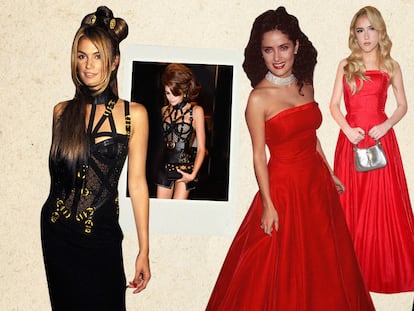How teens are ‘romanticizing’ their day-to-day lives, inspired by the universe of Sofia Coppola
The filmmaker’s subtle touch continues to exert an important influence on the collective imagination, including that of the young, who continually cite her on TikTok as an inspiration
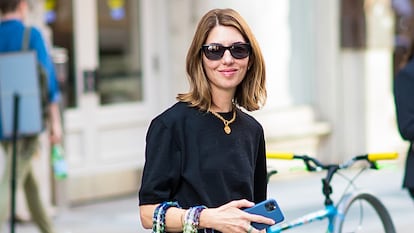
All it takes is to come across one of Sofia Coppola’s worlds, and suddenly we have the urge to put on a boring sweater and sprawl across an expensively upholstered sofa for an uninterrupted session of disassociation. Yes, it may have slipped our minds, but we are irredeemable Coppola fans. It’s a chronic condition, and one that has come back stronger than ever.
Nearly 25 years after the cultural milestone that was the release of her first feature film, The Virgin Suicides, the cult of Sophia Coppola has resurfaced among Gen Z. In this age of blokecore (the aesthetic that pairs soccer jerseys with other styles of clothing), motomamis, and Kardashian-Jenner and Rick Owens parishioners, the filmmaker’s subtle touch continues to exert an important influence on the collective imagination. And all that despite the fact that we thought that we had gotten over millennial pink.
Her new movie Priscilla arrives on screens at the beginning of 2024. As with practically all her work, it centers on a young woman trapped in a golden cage. In this case, it’s Priscilla Presley, who met Elvis when she was 14 years old and in whose resulting marriage with the King of Rock, he made every decision, right down to what color she should dye her hair. The movie’s Venice Film Festival screening will go down in history as the moment when Jacob Elordi and his closet stole our hearts.
Simultaneously, the director launched other parallel projects that remind us why everything she touches becomes an object of desire. There’s her travel clothes collaboration with the Scottish cashmere brand Barrie, accompanied by a campaign featuring actress Margaret Qualley, who dances with an unmade bed in a Parisian hotel room. Coppola also launched a line of gold pendants celebrating Sofia Wines’ 25th anniversary, which sold out in the blink of an eye. Likewise out of stock is Priscilla’s baby blue sweatshirt from A24, but still available is a heart pendant choker Coppola dreamed up with jewelry designer J. Hannah. As consolation, there’s always her inspirational playlists on Spotify, and the book that collects her personal photo archive and moodboards titled Archive.
“What is ‘aesthetic’? Ask Sofia Coppola,” writes fashion critic Rachel Tashjian in a Washington Post article that ties the obsession with stylized content on social media to the director’s approach. As the journalist mentions, to understand this renewed popularity, one need only look at the reams of TikTok videos comparing the messy rooms of girls with Coppola-esque situations.
@_c0ttagewh0re_ sofia coppola this is a proposal 🎀 #roomtour #roomtourcheck #roomtouraesthetic #cottagecore #cottagecoreaesthetic #softcore #softcoreaesthetic #fyp
♬ original sound - Anne
Stylist and art director Marina Pamiés reasons, “In Sofia Coppola’s movies we see that the visual scene (and its accuracy) is as important as narration, which links it to the way that young people live. We’re talking about a 360-degree aesthetic that touches as much on the clothes a character wears, or what they read, as decoration and food.”
This attention to details in some way paved the wave for Instagram posts, which young fans perfectly understand. “Her work doesn’t try to create a foreign space, but rather something more familiar, and in my opinion that is something that young people understand, whether at a visual level or through cultural references,” says Pamiés.
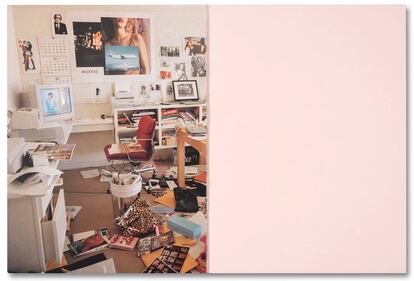
Nowadays, we have realized that without Sofia Coppola’s movies, there would be no Lana del Rey, or Bridgerton, or cottagecore. Today, we understand that the director has made us love many things, more than we are even conscious. Ladurée macaroons, the French musical duo Air, Charvet men’s shirts, pastel-colored Converse All Stars, Elizabeth Peyton’s portraits, photographs of almond trees in bloom, Chanel ballet slippers, peonies, private karaoke, books with pink covers, Chateau Marmont’s haunted swimming pool, cult dresses by the Lisbon sisters, her all-time favorite British tea: Taylors of Harrogate Yorkshire Gold, Ed Ruscha, marine blue, nondescript underwear, the novel Valley of the Dolls, Cartier watches, Polaroids, cashmere sweaters, and of course a wedding with Jacob Elordi, wearing a retro veil like Priscilla, with her Basque family invited (Why this crush now? Weren’t we sick of seeing him on Euphoria?) Without exaggerating too much, this list could go on for a few more paragraphs.
Coppola is the master of what on TikTok is known as all vibes, no plot, an expert on portraying that suspended state between adolescence and adulthood with which twentysomethings trapped in our current crisis cycle so identify. Another fact is that she gave girls permission to be sad, to not constantly be in sparkling mode. The heroines of her films would never smile if some guy asked them to. This is the antidote we needed after we were made to shoulder the slab of toxic positivity.
@moreofmaeve_ She’s just TOO good. #priscilla #priscillamovie #sofiacoppola #sofiacoppolafilm #sofiacoppolaaesthetic #girlhood #girlhoodaesthetic #sofiacoppolamovies #sofiacoppolaaesthetic #film #filmtok
♬ How You Satisfy Me - Spectrum
Nonetheless, it is striking that, at a time when nepotism in the cultural industries is under review, Sofia Coppola has emerged quite unscathed. After all, she is the daughter of Francis Ford Coppola, part of the Hollywood aristocracy, and therefore, the patron saint of nepo babies. Maybe her case is a cautionary tale. Let’s not forget that she was cast by her father in Godfather III, and had her acting panned by critics. From then on, she’s preferred to stay behind the cameras, but that episode must stay on her mind. We sensed it when her 16-year-old daughter Romy snitched in a video shot on the sly for TikTok that her parents wouldn’t let her use social media, lest she be judged a nepo baby. The video in question went viral, precisely because it was a clear example of the privilege they were trying to hide: in it, Romy talked about how she was punished for trying to rent a helicopter on the credit card of her father (Thomas Mars, lead singer of the band Phoenix) to go out to dinner with friends.
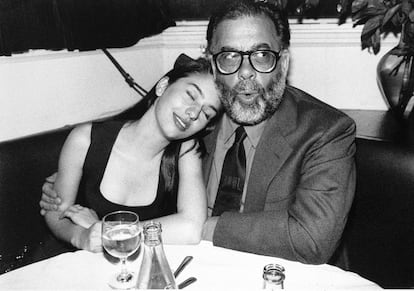
Screenwriter María Cortés confirms: “It’s true that she represents a type of movie that has recently generated debate, that of the privileged white woman. There’s a lot of that in cinema, no denying it. But she does it honestly, her approach is very genuine.” “She works in the universes she knows, she researches them, knows how to represent them and peel them back. It’s a small world, but an interesting one at the same time. Personally, I like the fact that there are women who can dedicate their time to thinking, time that I spend on more prosaic things like emptying the dishwasher or doing the laundry. I appreciate that they bring me that reflexive gaze, and also that they show me how people live who don’t hang their clothes to dry. Recently they canceled an Apple project based on the novel The Custom of the Country because its female protagonist ran the risk of being unlikable. I like that kind of thing about Coppola, she always places her characters a little further away from what we’ve already seen. And also, the fact that she doesn’t buy into male framing. She doesn’t compromise her gaze.”
The director has become synonymous with well-dressed cinema. It’s a world she is particularly interested in, and that she knows firsthand, ever since she was a Chanel intern at 16. But regarding that label, she has explained that she simply puts a lot of thought into the way her characters dress because it is yet another way to give the audience clues about who they are. For María Cortés, sometimes we are the ones who reduce the value of Coppola’s stories to mere styling concepts. “We use a filter with her. Male directors also make aesthetic decisions about their films, it’s a shame that many of them can only think to put a leather jacket on their protagonist to establish their character. Coppola, on the other hand, chooses very well, and knows who to surround herself with,” she says.
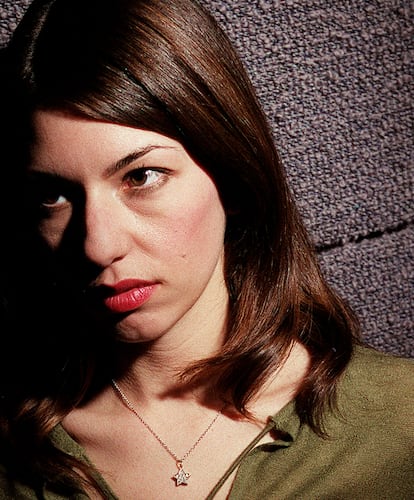
Sign up for our weekly newsletter to get more English-language news coverage from EL PAÍS USA Edition
Tu suscripción se está usando en otro dispositivo
¿Quieres añadir otro usuario a tu suscripción?
Si continúas leyendo en este dispositivo, no se podrá leer en el otro.
FlechaTu suscripción se está usando en otro dispositivo y solo puedes acceder a EL PAÍS desde un dispositivo a la vez.
Si quieres compartir tu cuenta, cambia tu suscripción a la modalidad Premium, así podrás añadir otro usuario. Cada uno accederá con su propia cuenta de email, lo que os permitirá personalizar vuestra experiencia en EL PAÍS.
¿Tienes una suscripción de empresa? Accede aquí para contratar más cuentas.
En el caso de no saber quién está usando tu cuenta, te recomendamos cambiar tu contraseña aquí.
Si decides continuar compartiendo tu cuenta, este mensaje se mostrará en tu dispositivo y en el de la otra persona que está usando tu cuenta de forma indefinida, afectando a tu experiencia de lectura. Puedes consultar aquí los términos y condiciones de la suscripción digital.
More information
Archived In
Últimas noticias
Most viewed
- Oona Chaplin: ‘I told James Cameron that I was living in a treehouse and starting a permaculture project with a friend’
- Sinaloa Cartel war is taking its toll on Los Chapitos
- Reinhard Genzel, Nobel laureate in physics: ‘One-minute videos will never give you the truth’
- Why the price of coffee has skyrocketed: from Brazilian plantations to specialty coffee houses
- Silver prices are going crazy: This is what’s fueling the rally

